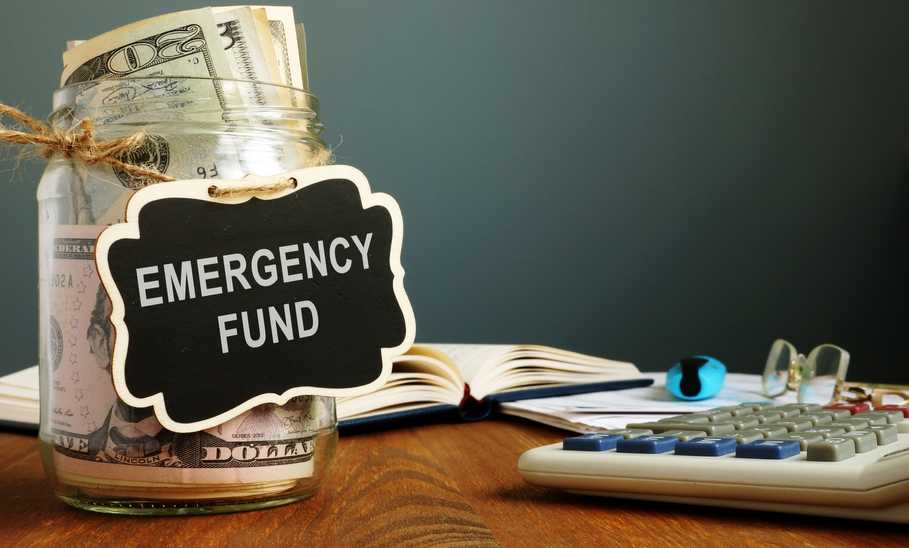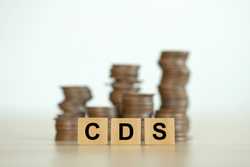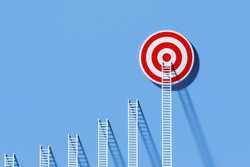Where to Keep Your Emergency Fund?

Our evaluations and opinions are not influenced by our advertising relationships, but we may earn a commission from our partners’ links. This content is created by TIME Stamped, under TIME’s direction and produced in accordance with TIME’s editorial guidelines and overseen by TIME’s editorial staff. Learn more about it.
An emergency fund helps you prepare for financial surprises, such as a hospital visit, urgent home repairs, or a sudden loss of income. Without savings to cover the unexpected, you could find yourself relying on high-interest loans or credit cards—and racking up debt that's hard to pay down.
Experts generally recommend setting aside at least three to six months' worth of living expenses in an emergency fund. Of course, deciding where to park your cash is an important part of building a fund. Ideally, you'll keep the fund somewhere safe and accessible so you can tap the cash in a pinch—and it's even better if you earn interest to help your money grow.
Here are eight places to consider for stashing your emergency fund.
High-yield savings accounts offer some of the best savings rates, making them an ideal place to park an emergency fund. These accounts function like traditional savings accounts but pay a much higher annual percent yield (APY).
The reason? High-yield savings accounts are offered by online banks and credit unions—which have lower overhead costs than their brick-and-mortar counterparts—so they can offer higher rates and lower fees. The downside is that online banks don't offer in-person services or support, so you should be comfortable banking online.
According to the Federal Deposit Insurance Corporation (FDIC), the national average interest rate on savings accounts is just 0.46% APY as of Oct. 16, 2023, while the best HYSA rates tend to be at least 10 times that amount.
Many people have a traditional savings account at a local bank or credit union. After all, a physical location makes it easy to deposit cash, get in-person help when needed, and keep your accounts under one roof. Having a savings account of a certain amount might also get you a better deal on a checking account at the same bank.
The trade-off is that traditional savings accounts tend to pay terrible rates compared to online banks. For example, a $10,000 deposit in a standard savings account at 0.46% APY would earn just $46 a year versus $505 in a HYSA paying 5.05% APY. Traditional banks and credit unions are also more likely to charge fees, which can limit how much your money grows.
Of all the deposit accounts, certificates of deposit (CDs) generally pay the highest rates. In exchange for that high APY, you leave your cash "locked up" for three to 60 months. You pay an early withdrawal penalty if you take your money out before the CD matures and the penalties can be steep.
It's difficult to predict when you might need to tap into your emergency fund, so stashing your cash in a CD is a bit of a gamble. It's best to look for CDs with reasonable early withdrawal penalties—just in case—and ones that pay competitive rates on shorter terms. For example, Ally offers a 9-month CD that pays 5% APY with an early withdrawal penalty of 60 days of interest (a low penalty compared to many banks).
A money market account (MMA) combines the interest-earning capabilities of a savings account with the check-writing privileges of a checking account. You can open a money market account at most banks and credit unions, but you'll find the best MMA rates online.
Keep in mind that money market accounts generally have larger minimum deposit requirements than savings accounts, and many have tiered interest rates based on how much you deposit. For example, U.S. Bank's elite money market account pays a 4.50% APY on balances of $25,000 or more—or a measly 0.01% APY if you deposit less. On the other hand, the Ally Bank Money Market Account requires no minimum balance and currently pays 4.40% on all balance tiers—a good reason to comparison-shop for the best rates.
Checking accounts are used for everyday deposits, withdrawals, and spending. These accounts aren't the best places to park emergency funds because the cash is too accessible (so you might be tempted to spend it), and the interest rates are usually very low.
Still, some checking accounts pay a modest APY while offering low fees and a large network of fee-free ATMs. The best high-yield checking accounts pay competitive rates, but generally only if you meet specific requirements. For example, Axos Bank's rewards checking pays a 3.30% APY if you receive at least $1,500 in monthly direct deposits and add a loan payment and investment accounts.
When you buy a Series I savings bond, you lend money to the U.S. government in exchange for interest. These bonds earn an interest rate that can change every six months (for better or worse). The rate is currently fixed at 4.30% through Oct. 2023.
There is an annual purchase limit of $10,000. The bond earns interest until it matures in 30 years or you cash it in. You can cash in a bond any time after 12 months and pay a penalty of three months' interest if you redeem it within the first five years. Due to these restrictions, consider parking only a portion of your emergency fund in a Series I savings bond while keeping the rest in an easier-to-access account.
Cash can be an easy way to hold your emergency fund, but it's a relatively risky option since it can be lost or stolen. What's more, cash doesn't earn interest, so your emergency fund won't grow—even if it sits for months, years, or decades. For example, a $10,000 cash emergency fund will still be worth $10,000 after five years. A $10,000 CD paying 5% will be worth $12,763—a $2,763 bonus. Keeping some cash on hand is okay, but the bulk of your emergency fund is better kept somewhere safe with earnings potential.
A prepaid card is a card that you can load money onto. Unlike credit cards, prepaid cards aren't connected to a bank or credit union, and you can only spend the amount you add to the card. There's usually a fee to buy the card, which comes with the same drawbacks as cash. The card could get lost or stolen, and it doesn't earn any interest. Still, a prepaid card can be a convenient place to park a small part of your emergency fund (say, $100) to cover small, unplanned expenses readily.
To protect your emergency fund, set some guidelines for what constitutes an emergency. Emergencies are generally costs that are unexpected, urgent, and necessary.
For example, a trip to the ER that insurance doesn't cover and a last-minute trip to visit an ill loved one are good reasons to dip into your emergency fund. A cosmetic Botox injection and your friend's lavish destination wedding are not. By setting clear boundaries (and sticking to them), you can avoid draining your emergency fund unnecessarily and potentially leaving yourself unprotected when a real emergency arises.
Remember, the best place to stash your emergency is somewhere safe and accessible. Deposits (including money in a savings account, CD, checking account, and money market account) held at FDIC-member banks and National Credit Union Administration (NCUA)-member credit unions are insured up to $250,000 per depositor. Similarly, Series I savings bonds are backed by the full faith and credit of the United States, making them a safe investment, too.
Experts generally recommend keeping three to six months' worth of living expenses in an emergency fund. Living expenses typically include your mortgage or rent, loan payments, vehicle costs (including gas and routine maintenance), utilities, groceries, childcare, pet care, insurance premiums, and any ongoing health-care costs, such as prescriptions or therapy.
Building an emergency fund starts with a goal. Crunch the numbers to see how much money you need to cover three to six months of living expenses. You might get away with a smaller emergency fund if you have a stable income and no dependents. You may need to save more if you're self-employed, have an irregular income, or someone in your household has ongoing medical needs.
Next, determine how much you need to set aside each month to reach your goal within six to 18 months. To make room in your budget, you might need to find ways to spend less (or cut costs completely) or ramp up your income by working overtime or picking up a side hustle.
Once you have a monthly savings goal, consider setting up automatic transfers from your checking account to the emergency fund. That way, you won't see the money or be tempted to spend it on non-emergency expenses.
You should only use your emergency fund for unplanned, urgent, and necessary expenses. Common reasons to dip into an emergency fund include a job loss, medical or dental expenses, home issues that affect your health or safety, car repairs, essential travel (for example, to be with a sick loved one), and pet-care emergencies.
The information presented here is created by TIME Stamped and overseen by TIME editorial staff. To learn more, see our About Us page.



